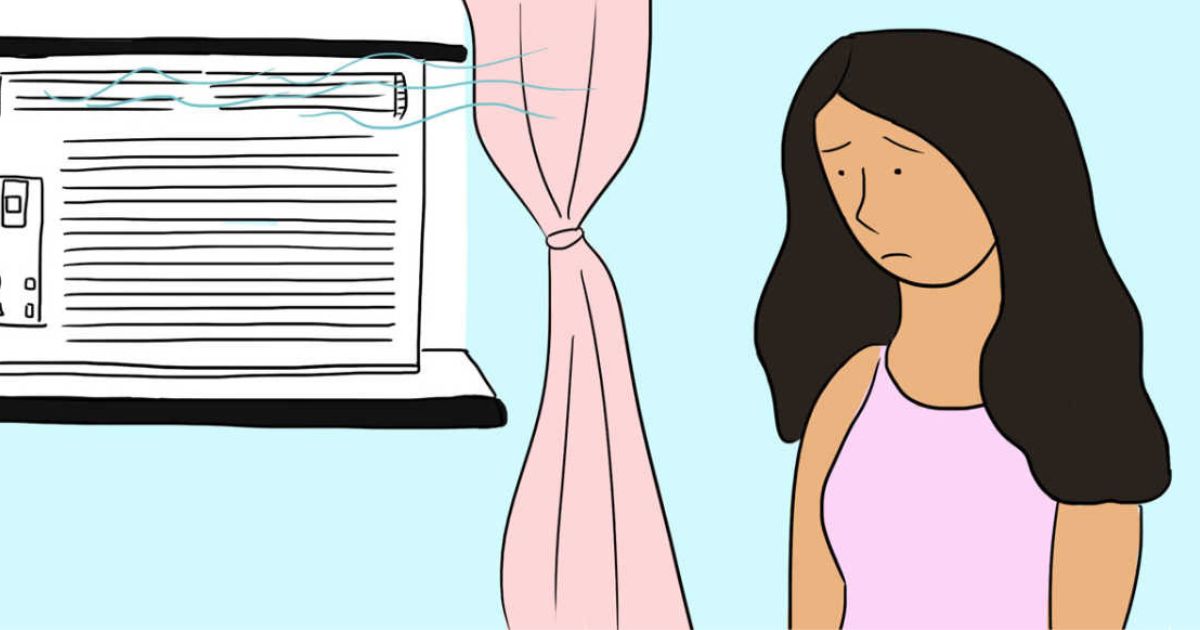Feeling under the weather while seeking relief from scorching heat? You might be experiencing what’s been dubbed “air con flu,” a term circulating on TikTok.
Users share flu-like symptoms like sneezing, headaches, dizziness, and more, which they attribute to prolonged air conditioner (AC) usage.
Although experts emphasize that a well-maintained AC itself isn’t usually the root cause, there are some legitimate concerns surrounding these symptoms.
The Environmental Protection Agency (EPA) acknowledges that occupants in air-conditioned buildings often report non-specific cold-like symptoms more than those in naturally ventilated spaces.
Despite this, the EPA clarifies that a properly used and maintained AC is not directly responsible for these symptoms. However, these concerns still raise questions.
What Is ‘Air Con Flu’? And Can Air-conditioned Rooms Truly Make Us Sick?

The California Department of Public Health (CDPH) explains that AC units are designed to filter out various pollutants like dust mites, pollen, mold spores, smoke particles, bacteria, and viruses.
Yet, this filtration can be compromised if filters or ducts aren’t cleaned or replaced as per manufacturer instructions. Consequently, this might lead to breathing difficulties, especially for individuals sensitive to molds or those with existing respiratory conditions.
Less severe symptoms like dry throat and congestion can occur for those sleeping close to AC units. Such symptoms tend to diminish within a few days.
However, poorly maintained systems can trigger mucous membrane irritation, skin issues, coughing, dizziness, and more, according to the EPA.
Mold spores, commonly found both indoors and outdoors, can be a chronic culprit in AC-related illnesses. These spores can land on damp surfaces and develop into mold colonies, but AC units help regulate humidity to prevent this.
Mold growth can also take place within the AC unit, especially when not regularly checked. Clogged filters due to dirt and debris can create a damp environment ideal for mold growth, potentially causing allergic reactions and exposing people to toxins.
Concerning airborne illnesses, AC units can, in rare instances, expose individuals to bacteria causing Legionnaires’ disease, a pneumonia-type ailment spread through inhaling contaminated water droplets.
While Legionnaires’ disease has been associated with poorly maintained AC systems, most cases arise in specific environments like hotels, care facilities, and hospitals.
Regular maintenance and control of indoor temperature and humidity levels can mitigate these risks, particularly for vulnerable populations like the elderly and those with chronic illnesses.
While it’s theoretically possible for airborne viruses and bacteria to pass through AC units, health agencies assert that their primary modes of transmission are close person-to-person contact.
To prevent “air con flu,” the EPA recommends investing in high-efficiency particulate air (HEPA) filters to trap harmful microbes. Additionally, proper maintenance is crucial. The EPA advises:
How To Avoid Air Conditioner Allergies?
- Ensure air filters are clean and replaced regularly (every 1 to 3 months, or more frequently if needed).
- Clear air vents of obstructions and dust.
- Check for moisture buildup or condensation within the unit, as this can encourage mold growth.
- Consider using shading strategies or drapes to help manage indoor temperatures along with switching to high-efficiency AC units.
In conclusion, while a well-maintained AC isn’t typically the direct cause of “air con flu,” it’s important to address maintenance and cleanliness to mitigate potential health risks associated with prolonged AC usage.








Leave a Reply
You must be logged in to post a comment.